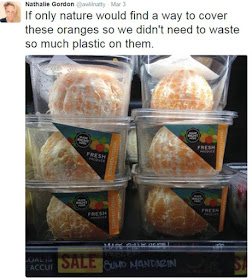The latest Which? Report highlights the 'up to' 4x premium shoppers pay for the convenience of pre-sliced and pre-portioned foods. The price disadvantage of buying smaller sizes of other essentials is also highlighted.
Whilst retailers can obviously point out that in most cases the unit price is displayed on the price-label to facilitate like-with-like price comparison, the only problem can be the fact that many consumers do not understand the meaning of unit pricing, apart from the mental gymnastics required in breaking down 100g, kilos and volume-equivalents in the case of liquids.
In effect, the unit-price serves little useful purpose and may even add to the confusion of the shopper...and given that confusion leads to suspicion, it can be seen that the real casualty is trust in the retailer...
On-shelf education could be applied via a standardised category league-table of price per 100g comparisons, in very simple language...
Patronising? No way. We are not talking about degrees of intelligence, merely accepting that a busy, distracted shopper is only giving 10% of their attention to true comparison, based on a reasonable level of trust in the retailer...
Allowing the current confusion to continue can lose both trust and shopper...
Of course teaching consumer-shoppers to understand unit pricing makes the consumer better-informed and more difficult to mislead...
Welcome to the new world savvy consumer!
Professional NAMs already take that risk by helping the buyer to make valid like-with-like comparisons, thereby making them more demanding, but the current climate demands a fully informed supply chain.
Helping the 'buyer' to buy can help...

No comments:
Post a Comment